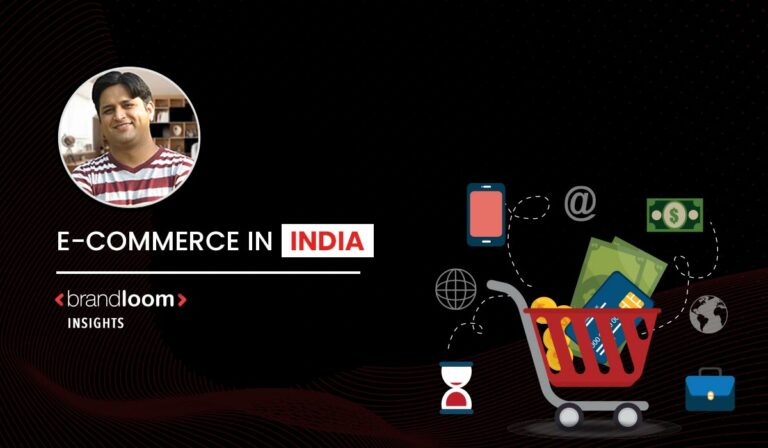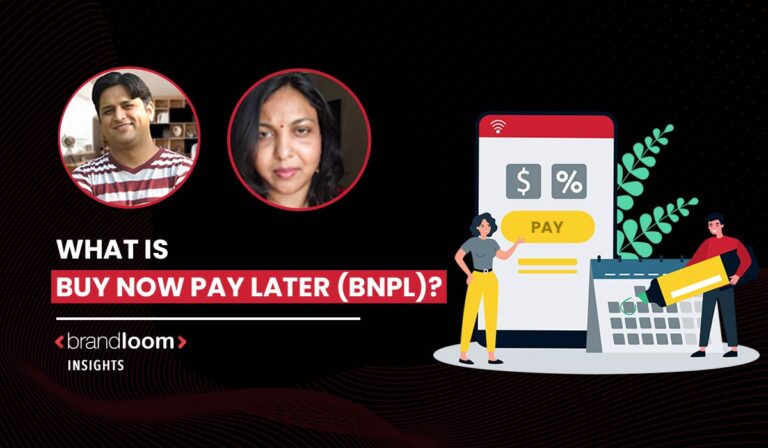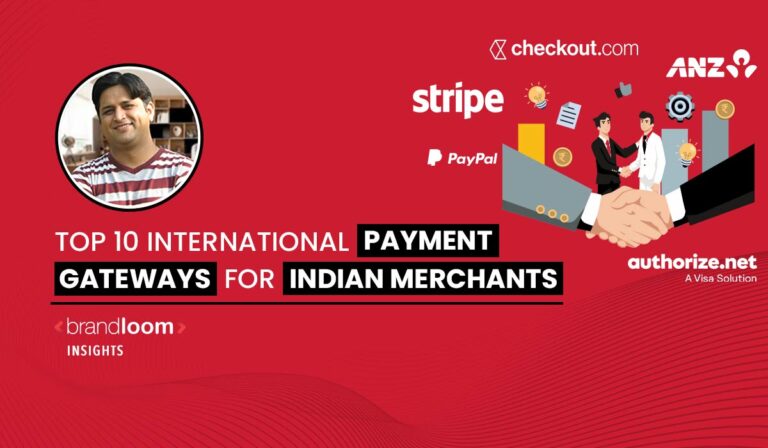India’s internet economy is growing rapidly, with projections estimating it will reach $1 trillion by 2030. Smartphone and internet usage have risen in recent years. One major driving factor in this growth is e-commerce.
E-commerce in India isn’t just a trend. It’s a powerful shift offering enormous growth and expansion opportunities.
With the help of an online advertising and branding agency like Brandloom, your e-commerce businesses can utilize online marketing channels to drive growth and increase their brand value.
Let’s examine key factors contributing to the significant growth of e-commerce in India and understand how e-commerce has helped various businesses grow in size.
The Major E-commerce Models in India
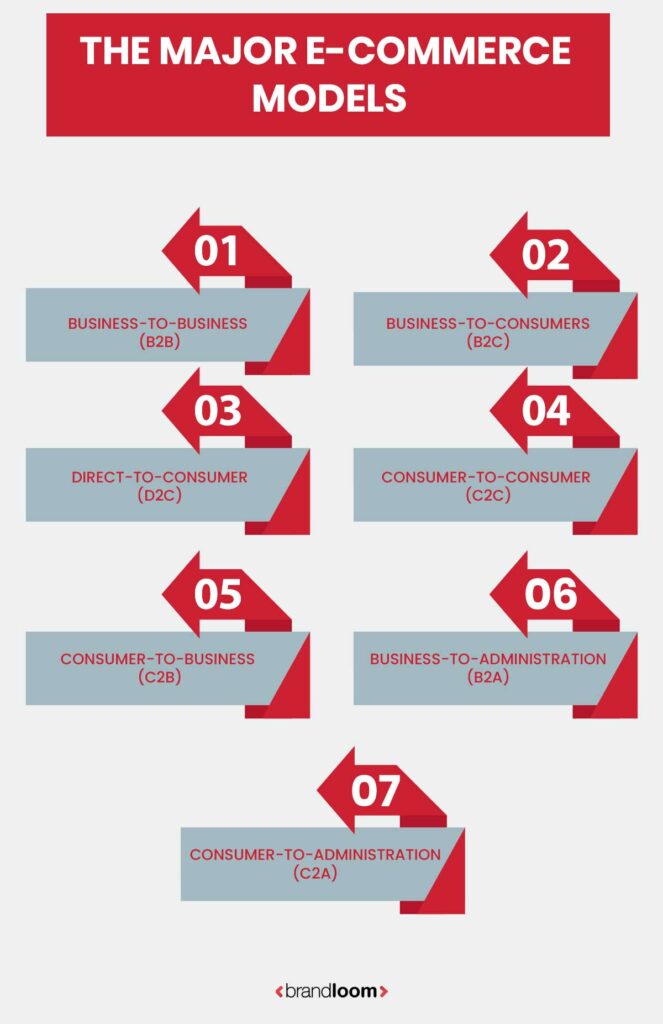
1. Business-to-business (B2B)
Business-to-business, or B2B e-commerce, is the term used to describe the online transfer of goods, services, or information between businesses. B2B E-commerce includes online marketplaces that let companies look for goods, services, or information and start deals using e-procurement platforms. For example, a restaurant ordering bulk supplies online from a wholesale food distributor.
2. Business-to-Consumers (B2C)
The phrase gained popularity in the late 1990s when online merchants and stores were a new concept. Businesses engage in these interactions when they sell consumers goods, services, or information. Business firms or intermediaries usually handle shipping, distribution, and customer service. An example of B2C e-commerce is a customer purchasing a smartphone directly from an online retailer like Amazon.
3. Direct-to-Consumer (D2C)
Unlike B2C e-commerce, in this type of business, a company that manufactures or produces goods and services sells directly to customers online without needing middlemen or distributors. For instance, a customer purchasing t-shirts directly from the Adidas website bypasses traditional retail stores.
4. Consumer-to-consumer (C2C)
C2C involves customers exchanging goods, services, and information with one another. Typically, a third party that offers an internet platform helps to carry out these transactions. Two good examples include online auctions and classified ads. Platforms like Facebook marketplace also enable C2C transactions.
5. Consumer-to-business (C2B)
In this type of e-commerce, individuals offer their products and services online for companies to bid on and purchase. It’s the opposite of the traditional B2C model, where businesses sell to consumers.
A well-known example of a C2B platform is an online marketplace where users sell royalty-free photographs and design assets, such as iStock. Another illustration would be a job board where freelancers or consultants offer their skills and services to businesses seeking specific expertise.
6. Business-to-administration (B2A)
This e-commerce type involves online transactions between companies and public administration or government bodies. Many government branches rely on businesses in the private sector for electronic services and products, which include legal documents, registries, tax information, and employment-related data. Businesses provide these services electronically, contributing to the growth of B2A services.
7. Consumer-to-administration (C2A)
C2A e-commerce involves online transactions between individual consumers, government bodies, or public administration. While governments typically do not purchase anything from individuals, citizens commonly engage electronically in several key areas. For example:
Accessing information and making payments related to government-provided benefits, filing tax returns, submitting payments online, scheduling appointments, accessing test results or health information, and making payments for government medical services.
The History of Indian E-commerce (From Mid 90s to Mid 2000s)
The first wave of e-commerce in India began in 1995 when the country’s internet went live. In addition, the 1991 economic liberalization drew Multi-National Corporations (MNCs) and significantly accelerated the Information Technology (IT) sector’s growth.
These liberalization efforts encouraged small and Medium Enterprises (SMEs) to grow, decreasing high taxes and losing import restrictions. The license regime was eliminated. The IT sector and SMEs were among the first in India to use the Internet, which sparked the development of employment searches, marriage websites, and B2B platforms. Some examples of the same are provided below:
1. B2B Directory
India’s first-ever online B2B directory debuted in 1996, taking advantage of the nation’s liberalized trade rules to accelerate its development as an online marketplace.
2. Virtual Matrimony
The first virtual matrimonial platform was introduced in India in 1996. It completely changed the perception of conventional ways to find the perfect partners for marriage.
3. Virtual Recruitment
Following the economic reforms of 1991, the services sector in India began to grow, which led to the emergence of the virtual recruitment sector in 1997. Employment increased then, and the Internet made communication more accessible for companies and job seekers.
India has witnessed significant advancements in e-commerce across various sectors, such as travel, retail, group purchasing, and societal interaction. The period from 2000 to 2005 saw muted activity, but a transformative phase began in 2005:
The E-Commerce Transformation in India since 2005
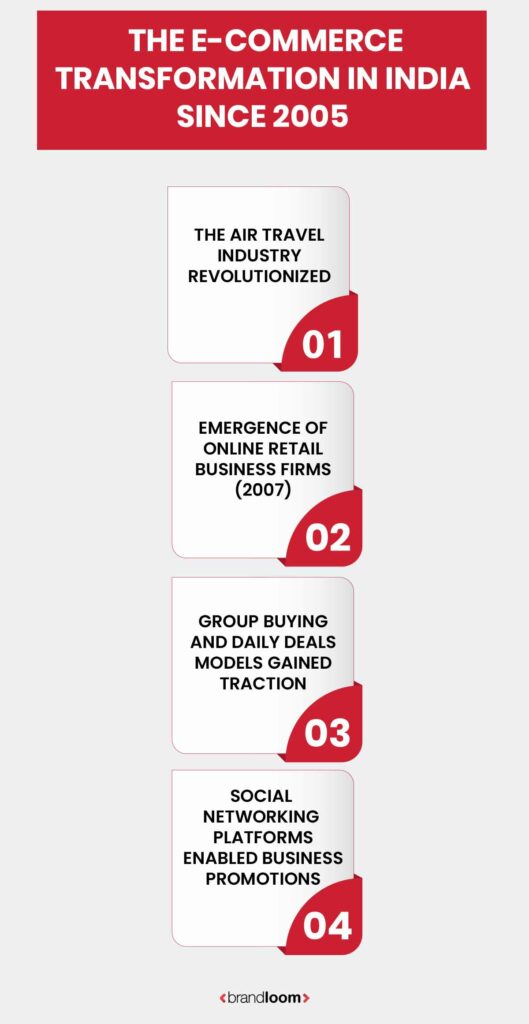
The Air Travel Industry Revolutionized
- The introduction of online booking platforms made air travel accessible to a broader population.
- Boosted the online travel sector and paved the way for the rapid growth of online retail.
- Increased customer comfort with making purchases online.
- Platforms like IndiGo and SpiceJet enabled easy online ticket distribution, further supporting the e-commerce landscape.
Emergence of Online Retail Business Firms (2007)
- Changed purchasing behavior of people with a shift focusing on online shopping.
- Provided convenient shopping experiences from home.
Group Buying and Daily Deals Models
- Gained traction and significantly impacted e-commerce.
Social Networking Platforms
- Gained more prominence since 2005.
- Enabled e-commerce businesses to engage effectively with their target audience.
Recent Growth Statistics of the Indian E-Commerce Market
The e-commerce sector in India is expanding rapidly. India is the world’s second-largest internet market, with over 900 million subscribers. Several factors, such as rising income, low data prices, and higher smartphone penetration, are driving the spread of e-retail and the growth of the e-commerce industry in India. In 2022, Indian e-commerce and consumer internet companies raised $15.4 billion in PE/VC funding, doubling the $8.2 billion raised in 2020.
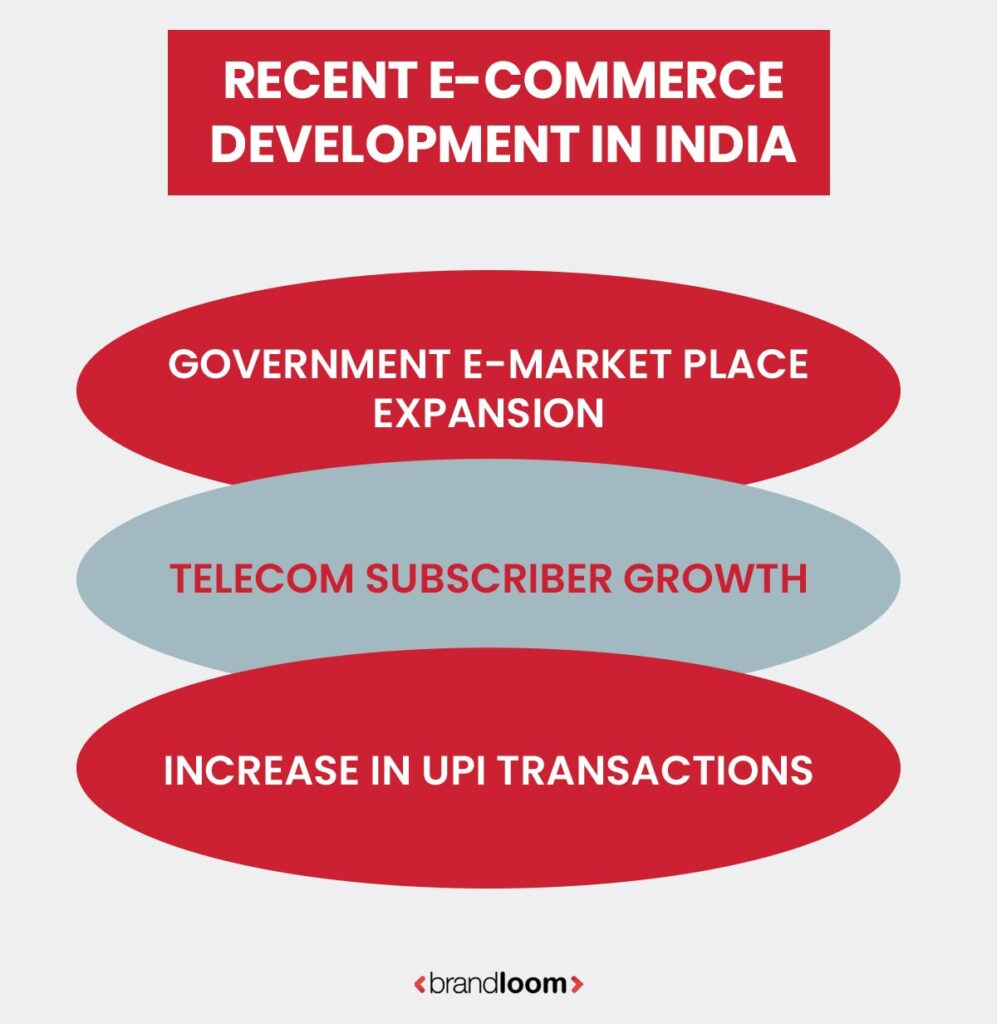
Government E-Marketplace (GeM) Milestones
- FY 2022-23 saw GeM achieve its highest-ever Gross Merchandise Value (GMV) of $2011 billion.
- GeM has accumulated a cumulative GMV exceeding 4.5 lakh crore since its inception on July 23, 2023.
- Savings from GeM operations have surpassed INR 40,000 crore, highlighting its efficiency in government procurement.
Telecom Subscriber Growth
- Telecom infrastructure supports digital connectivity, crucial for e-commerce expansion and online transactions.
- As of February 2024, India had over 1199 million telecom subscribers.
Increase in UPI Transactions
- India recorded 125.94 lakh crore transactions via the Unified Payments Interface (UPI) 2022.
- A robust digital payment ecosystem facilitates seamless transactions and boosts e-commerce activities in the country.
Online Shopping Behavior Statistics in India – 2024
E-commerce has revolutionized shopping by offering fast delivery and a wide array of categories for online shopping. Recent research indicates widespread adoption across all regions in India, with a significant:
- 60% of online orders originate from tier-two cities and smaller towns.
These areas drive substantial growth, contributing to most transactions on leading e-commerce platforms despite slightly lower average selling prices than tier-1 cities.
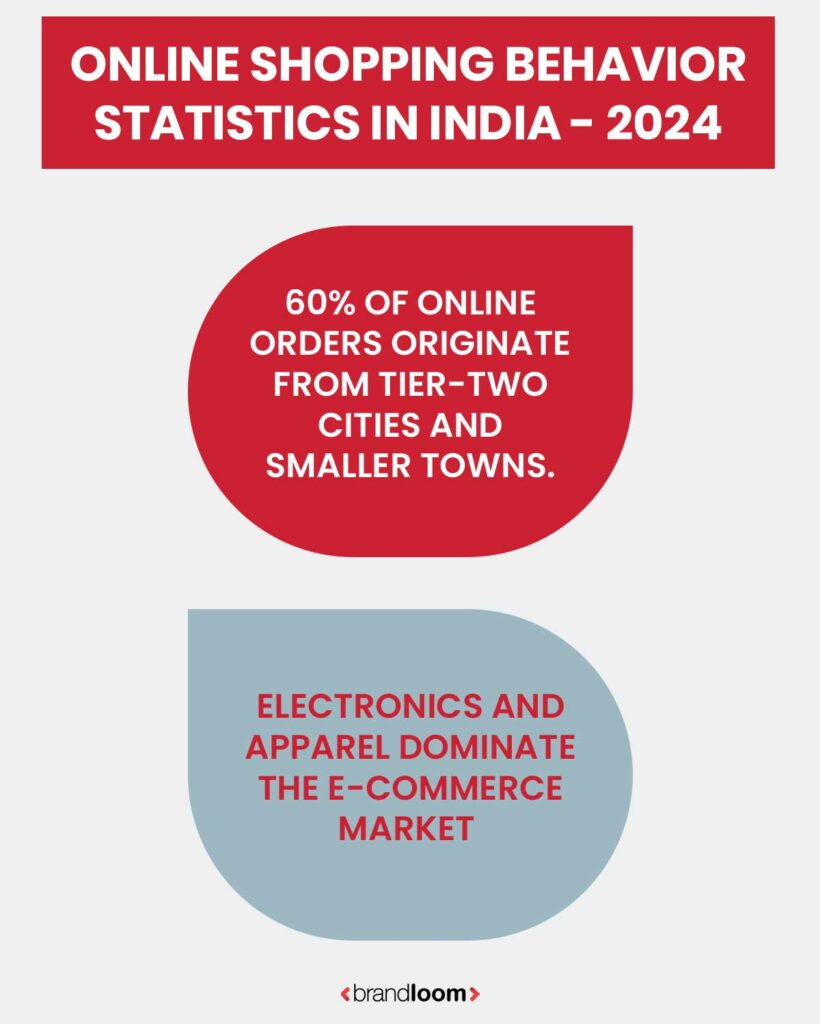
Electronics and apparel dominate the e-commerce market by transaction value:
- Comprising nearly 70% of the market.
Alongside traditional sectors, emerging categories such as ed-tech, hyperlocal services, and food tech are gaining traction, reflecting evolving consumer preferences and expanding opportunities in the digital marketplace.
Mobile E-Commerce Statistics in India – 2024
- E-commerce allows users to perform online transactions conveniently, utilizing the Internet anytime and anywhere.
- Mobile commerce, including shopping and transactions via smartphones and tablets, has seen significant growth recently.
- Smartphones account for over 60% of e-commerce transactions.
The Dominance of Social Media in Indian E-commerce – 2024
An electronic commerce subclass called ‘Social E-commerce’ has significantly impacted the growth of e-commerce in India. More specifically, social e-commerce is just utilizing social media for digital commerce. Here are some statistics on recent social e-commerce developments:
1. Facebook’s Extensive Social Commerce Reach
- Over 250 million Facebook Shops are in use.
- Facebook has 2.96 billion monthly active users, surpassing Instagram in user volume.
- It ranks as the third most visited website globally, with 11.2 billion visits, 1.5 billion unique visitors, and an average visit duration of 31 minutes.
2. Instagram Users and Social Shopping
- Instagram is the fourth most utilized social platform, with 2.35 billion active users monthly.
- In 2023, 34% of Instagram users made purchases via the platform.
- One-third of these users engage in social shopping, presenting a significant business opportunity.
3. Millennials to Lead Global Social Media Shopping by 2025
By 2025, millennials will drive one-third of global social media shopping expenditure, followed by:
- Gen Z at 29%
- Gen X at 28%
Baby boomers will have the lowest engagement due to challenges with new technologies.
E-commerce Festive Shopping Trends in India – 2024
During India’s holiday shopping season, the number of people searching online for deals across several categories increased significantly. People were greatly interested in consumer electronics, groceries, meals, personal care products, gifts, etc. This pattern emphasizes the importance of having a robust online presence and using strategic marketing in these various industries. Here are a few insights on shopping trends during festive seasons:
- 35% of Consumers Opt for Festive Supplies Online
- Many shoppers prefer online platforms for purchasing Pooja and Diwali supplies.
- Popular shopping months: October, November, and December.
- Major festivals are Diwali, Dussehra, Navratri, Dhanteras, and Christmas. Consumers view this period as auspicious for purchases.
- Increased Shopping activity can be witnessed during festival shopping.
- Sellers offer substantial discounts and attractive deals during festival shopping.
Recent Developments in the Indian E-commerce Business Sector
The major developments that took place in the Indian E-commerce sector are listed below:
- With Walmart, its parent firm, likely to contribute US$ 600 million, Flipkart, the leading domestic e-commerce startup, is preparing to raise US$ 1 billion in a fresh funding round.
- Zepto, a firm that has only been around for two years, raised US$200 million on August 25, 2023, increasing its valuation to US$ 1.4 billion and earning it the first unicorn in India for 2023.
- The Tata Group stated in October 2023 that it would invest an additional US$1 billion in its super app, Tata Neu, to complement the US$2 billion that it had invested in its digital division earlier in the year.
- Amazon India marked 2023 with significant achievements, including growing its seller base to over 1.4 million, adding 300,000 new sellers, digitizing 6.2 million small businesses, facilitating US$8 billion in exports, and creating 1.3 million jobs. They have also committed to creating two million jobs, enabling US$20 billion in exports, and digitizing 10 million enterprises by 2025.
- In order to improve the overall customer experience, Shiprocket and Truecaller tied partnerships on January 17, 2024, with the goal of streamlining the mobile onboarding and shopping experiences for three lakh Shiprocket merchants.
- On December 4, 2023, ODN formed a strategic alliance with Middle East-based Channel Engine to penetrate the GCC e-commerce market, aiming to revolutionize the sector by connecting brands and retailers to global sales channels for enhanced cross-border success.
- On February 6, 2024, Flipkart inaugurated its fourth grocery fulfillment center in Malda, West Bengal. This facility has created over 700 local jobs and provides nationwide market access for local sellers, MSMEs, and farmers.
Future of E-Commerce in India
E-commerce is an industry that allows companies to contact a wider audience, use low-cost marketing techniques, and enter new markets in various categories and geographical areas. With just a few clicks, customers quickly compare prices, browse a vast selection of products, and purchase from the comfort of their homes. All these factors contribute to the growth of this industry.
Growth Projections on E-commerce in India
1. Online Grocery Market Expansion
- The Indian online grocery sector is expected to grow from US$ 3.95 billion in FY21 to US$ 26.93 billion by 2027. This reflects a Compound Annual Growth Rate (CAGR) of 33%.
2. Consumer Digital Economy Growth
- By 2030, India’s consumer digital economy will reach US$ 1 trillion.
- An increase in online services such as edtech will drive this growth.
- The market size was US$ 537.5 billion in 2020.
3. E-commerce Industry Growth
- The Indian e-commerce sector is projected to reach US$300 billion by 2030, representing substantial growth in the coming years.
4. Third-Party Logistics Expansion
- Third-party logistics providers may handle around 17 billion shipments in the next seven years.
5. E-retail Market Projections
- The Indian e-retail market is anticipated to exceed US$ 160 billion by 2028. In 2023, the market estimate value was between US$ 57-60 billion.
- This marks an annual growth of US$ 8-12 billion since 2020.
With the introduction of cutting-edge technologies like augmented reality, AI, and machine learning, consumer interactions with e-commerce platforms will change, leading to more customized purchasing experiences.
Conclusion
E-commerce in India serves as more than just a marketplace. It drives economic growth and innovation. Various factors are contributing to the rise of e-commerce in the country. Firstly, the quick expansion of internet access, particularly in rural regions, broadens the number of internet users in India. Moreover, the widespread availability of smartphones and affordable data plans has made it easier for people to access online shopping platforms.
The emergence of digital payment systems, especially via UPI (Unified Payments Interface) platforms, has simplified transactions and improved users’ comfort in making online payments.
E-commerce marketplaces provide various products at competitive prices, making it convenient for customers to find desired items through frequent sales. With the help of an online advertising agency like Brandloom, specializing in e-commerce services, businesses can optimize their online presence and capitalize on the growing trend of digital commerce for sustainable growth and nationwide empowerment.
Frequently Asked Questions
1. What Exactly is E-Commerce?
E-commerce, short for electronic commerce, is the buying and selling of goods or services over the Internet. This broad category includes digital services like web hosting, online courses, and online retail stores like Amazon and Walmart.
E-commerce platforms include online marketplaces that sellers register for, software as a service (SaaS) tools that allow customers to rent online store infrastructures and open-source tools that businesses manage with the help of developers.
E-commerce brings numerous benefits, such as convenience, 24/7 availability, a global reach, lower overhead costs for sellers, and a wide variety of products. Partnering with an e-commerce services agency can further streamline operations, optimize online platforms, and implement effective marketing strategies to maximize business advantages.2. How can I start an e-commerce business?
Starting an E-Commerce business involves multiple steps: selecting a niche, understanding your target market, drafting a business plan, establishing an online store, sourcing products, marketing your brand, and ensuring top-notch customer service. Platforms like Shopify, WooCommerce, Magento, and E-Commerce development companies like Estrrado simplify setting up an online store.
Once your online store is set up on platforms like Shopify or WooCommerce, it’s crucial to optimize your website for search engines (SEO) and ensure it’s mobile-friendly. This helps attract organic traffic and improves user experience, leading to higher conversions. Continuous analytics and customer feedback monitoring allow you to adjust your business operations.
If you are a business owner, e-commerce service-providing agencies like Brandloom can help optimize your online presence to increase customer engagement.3. How does an e-commerce website work?
E-commerce websites are online platforms where sellers can list their products or services, and customers can purchase them using electronic transactions. All online transactions happen through secure payment gateways, and the goods are shipped to the customer’s doorstep.
E-commerce websites function through a sequence of stages that use the database, website code, and third-party programs like a payment processor or payment gateway.
When a customer visits an E-commerce website through search engines, the site uses its database to show products and information. Customers add items to their carts, pay securely through a payment service, and get updates on shipping. The site or third-party companies manage orders for delivery. To develop a user-friendly and responsive website, you can contact us at Brandloom, India’s leading E-commerce website development agency.4. How Can I Boost My E-commerce Website?
Successful E-Commerce requires online advertising efforts like search engine optimization (SEO), social media engagement, and email marketing to drive traffic and retain customers. Partnering with the best E-commerce service providers in India like Brandloom can enhance the customer experience, ensuring your business can scale and thrive in the competitive online marketplace.
Generating referral traffic through organic or paid channels can also drive visitors to your e-commerce website. You can collaborate with authoritative voices in your industry to refer your business to others.
Offering coupon codes or promotional offers is another useful strategy for quickly boosting traffic, though it may not always lead to highly qualified website visitors.5. What are some emerging trends in E-commerce?
Emerging trends in eCommerce are changing how companies engage with their customers. The convenience of smartphones and mobile apps is driving the growth of mobile shopping. Voice commerce is becoming more popular as smart speakers and other devices enable hands-free shopping.
Social commerce is also increasing, and social media platforms are used as sales channels. Additionally, augmented reality (AR) and virtual reality (VR) are revolutionizing the shopping experience by letting customers see products in real-world settings before purchasing.
Furthermore, the customers’ concerns about sustainability and eco-friendly activities are growing, affecting their buying decisions. In response, companies are stressing sustainable operations, packaging, and sourcing to appeal to customers who care about the environment. These patterns demonstrate how E-commerce is developing quickly and how customer preferences and innovation will continue to affect online buying experiences.
At Brandloom, our skilled e-commerce development team will assist you in choosing the best platforms to sell your products, ensuring that you reach a wide range of customers efficiently.
Ecommerce in India in 2018
India is one of the largest consumer markets in the world. Being the youth capital of the world, India has emerged as one of the most lucrative business destinations for digital and eCommerce businesses. In the last few years, India has seen a huge surge in interest and investment in the eCommerce space, and many studies assert that the influx is not going down any time soon. But are the estimates of projected gains really true? Or is it just a hype? As one of the larget eCommerce services companies in India, BrandLoom has been tracking eCommerce in India since 2015. Let us learn more about its status in 2018.
Internet Penetration in India
It is no brainer that eCommerce is not possible without access to the internet. While in terms of population India is much bigger than several countries in Europe combined, internet penetration in India still lags behind.
According to a 2018 study published by Pew Research Centre, only 25% of the Indian adult population uses the internet regularly. Again, this is mostly restricted to urban and semi-urban areas. Lack of proper infrastructure plays a big role in restricting access to the internet for our citizens. Moreover, in remote areas, owning a cell phone with internet access is still a dream for poor people.
However, the situation is changing, and fast. India is a highly competitive market for telecom service operators- this has led to intense price wars, which have progressed to cheap internet usage rates among the service providers, much to the benefit of customers.
India has one of the fastest growth rates of digital proliferation in the world. A study by the Aranca says that internet penetration in India took a massive leap between 2007 and 2017.
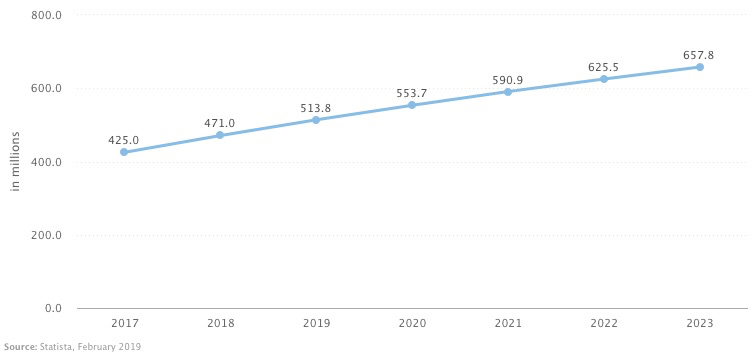
In 2007, the penetration rate was just 4%. As of Dec 2018, it stands at 42%. What it means is that approximately 566 million Indian have access to the internet. Out of this 493 million (or 87% population) is actively using the internet.
293 Million active users live in urban India and rest in rural markets of India. (Source)
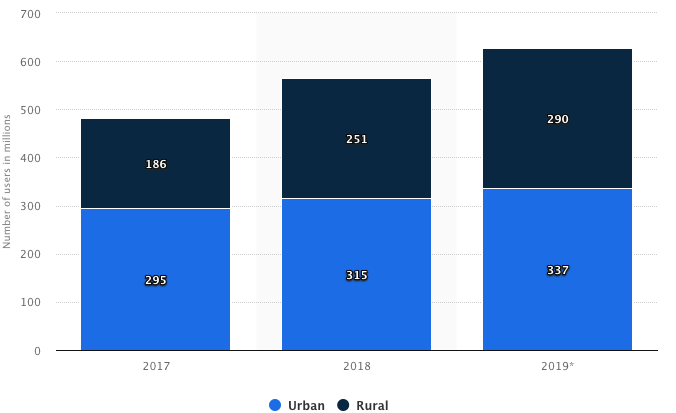
Just imagine the market size from that data. In sheer numbers, these projections mean that the number of internet users in India is more than that of several other countries combined. There is definitely a huge potential to be unlocked in the online commerce sector.
Modes of eCommerce Transactions
In the recent times, there has been a remarkable transformation in the way business is conducted in India. From travel bookings to apparels to food to anything under the sun can be bought online. Ever thought what would life be without Ecommerce?
Ecommerce is a huge platform which is growing at an unprecedented rate all over the world. People from every age whether they are children, young or old love to shop online. India’s e commerce market is growing exponentially from US$ 38.5 billion in 2017 to US$ 200 billion by 2026.
The ecommerce transactions, based on participants involved can be segmented into three broad categories or modes:
-
- Consumer-to-consumer (C2C) – Online classifieds, online travel
- Business-to-consumer (B2C) – Online retail, online retail/e-tailing, online classifieds, digital downloads, financial services, online travel
- Business-to-business (B2B) – Online classifieds
India Ecommerce Market Size
Let us look at some ecommerce statistics over the years for India. As per Statista the eCommerce industry market size would be approximately US$ 200 Billion in 2027. This will be a significant rise from about 39 billion dollars in 2017 and US$2 Billion in 2007.
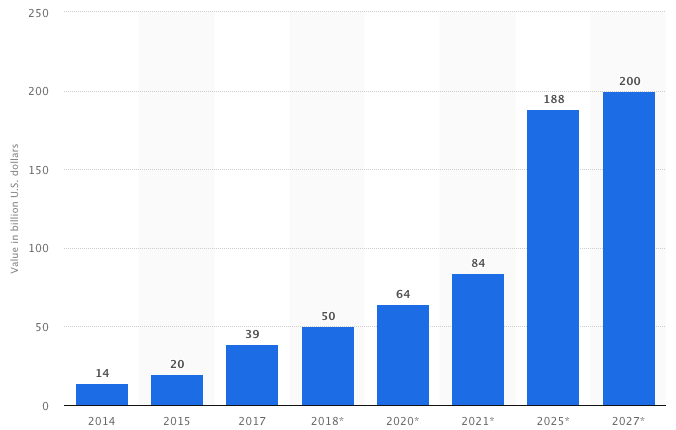
Unsurprisingly, a growing digital population, expanding beyond the country’s urban centers spent an average 224 dollars per user in 2017. The increase of smartphone users was directly proportionate to the growth in the e-commerce sector.
As per Statista, India’s consumer-facing eCommerce market (B2C-C2C) is projected to grow from US$20.5 Billion in 2017 to US$ 62.5 Billion in 2023.
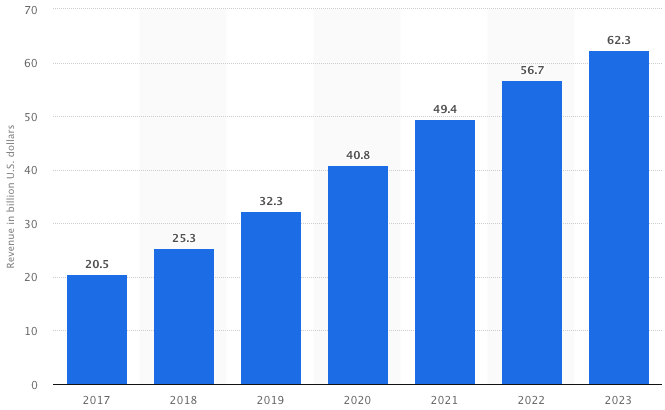
According to Google India Research, by 2021 India is expected to generate $100 billion online retail revenue out of which $35 billion will be through fashion e-commerce. Online apparel sales are set to grow four times in coming years.
As per media sources and Aranca research the e-commerce market is expected to reach US$ 64 billion by 2020 and US$ 200 billion by 2026 from US$ 38.5 billion as of 2017.
Number of digital buyers in India from 2014 to 2020 (in millions)
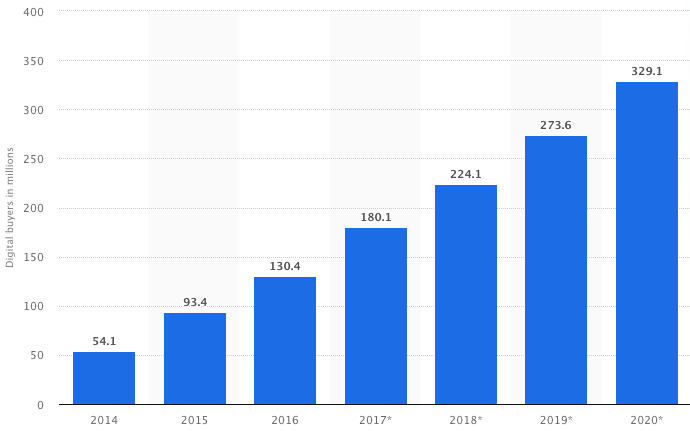
Online Buying behaviour in India
Significant improvements in technology and the rapid growth-rate in the digital payments sector, over the last three years have increased the number of Indians buying online. More than 69 million Indians purchased their apparels books, electronic items, mobiles and accessories online in 2016 itself. It is expected that this never will rise to over 175 million by 2020.
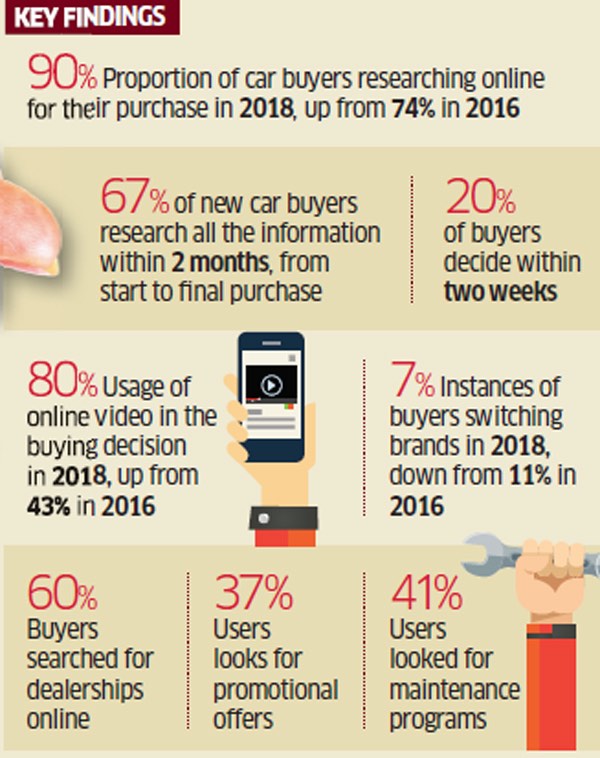
Growth of Ecommerce and Success Stories in India
But when did it all begin? Its inception may be traced back to 1991 with Rediff. However the first successful ecommerce portal was IRCTC launched in 2002.
- MakeMyTrip – MakeMyTrip launched in the year 2000 as India Ahoy was the first-of-its-kind online travel portal in India. It redefined the way how Indians purchased e-tickets and booked hotels. With its recent merger with Goibibo, another popular travel portal, it has reported revenue of $447 million half of which came from hotels and travel packages.
- Flipkart – Flipkart, founded in 2007, is one of the pioneers among India’s successful ecommerce startups. It started with online bookselling and gradually broadened their base with apparels, electronic gadgets, household items and other retail options. It was first to launch its mobile app version.
- Snapdeal –Launched in the year 2010 , the company saw an immense growth in just two years – its growth being almost 600% every year. Initially launched as an offline coupon business by the name MoneySaver, later they moved into selling various items – from clothes and books to gadgets and appliances.
- Amazon India- launched operations in India in June 2013. It offered a wide variety of choices in books, movies and television shows. Today it has a significant market share in online market.
- UrbanClap- founded in 2014, is a leading online marketplace for local services such as repair & maintenance, home cleaning, homecare & design, pest control, packers & movers, business services, etc.
- BookMyShow is India’s largest entertainment ticketing website with 40% CAGR in revenues and over 90% market share in the online entertainment ticketing.
- Yatra Online, Inc., incorporated in 2005 provides travel-related services, including domestic and international air ticketing, hotel bookings, homestays, holiday packages, bus ticketing, rail ticketing etc.
- Paytm, One97’s flagship brand, is India’s largest digital goods and mobile commerce platform – inspired and driven by a commitment to great consumer experience. Paytm is also a leading payment solutions provider to ecommerce merchants using its RBI approved semi-closed wallet.
Key factors contributing to growth story of ecommerce in India
- Declining broadband subscription prices
- Launch of 3G/4G services leading to an ever-increasing number of internet users in india
- Urban India’s changing lifestyle and high disposable income
- Convenience of online shopping
- Growing acceptability of online payments
- More Indians spending time online
- Increase in the number of payment options
- Government initiatives: Since 2014, the Government of India has announced various initiatives namely, Digital India, Make in India, Start-up India, Skill India and Innovation Fund to support Ecommerce. Some of the major initiatives taken by the government to promote the ecommerce sector in India are as follows:
-
- Reserve Bank of India (RBI) has decided to allow “inter-operability” among Prepaid Payment Instruments (PPIs) such as digital wallets, prepaid cash coupons and prepaid telephone top-up cards.
- RBI has also instructed banks and companies to make all know-your-customer (KYC)-compliant prepaid payment instruments (PPIs), like mobile wallets, interoperable amongst themselves via Unified Payments Interface (UPI).
- To promote digital payments, the Government of India has distributed rewards worth around Rs 153.5 crore (US$ 23.8 million) to 1 million customers under the Lucky Grahak Yojana and Digi-Dhan Vyapar Yojana.
- The Government of India launched an ecommerce portal called TRIFED and an m-commerce portal called ‘Tribes India’ which will enable 55,000 tribal artisans get access to international markets.
- The Indian Government hiked the limit of foreign direct investment (FDI) in the Ecommerce marketplace model for up to 100 per cent (in B2B models).
The ongoing digital transformation in the country is expected to increase India’s total internet user base to 829 million by 2021 from 445.96 million in2017.
India’s Ecommerce revenue is expected to jump from US$ 39 billion in 2017 to US$ 120 billion in 2020, growing at an annual rate of 51 per cent, the highest in the world.
Sector-wise Market Split
Established sector: The following sectors have grown to a good market size with decent internet penetration
- OTAs
- Online ticketing
- Food delivery
- Cabs
Large Potential sectors: Those with low internet penetration but with a considerably good market size
- Groceries
- Fashion
- E-tailing (Online Retailing)
Emerging: Low online penetration, low market size but high-growth sectors.
- Hyperlocal
- Medicine delivery
As of now the Indian e commerce industry will be observing how the Walmart buyout of Flipkart drives growth of e-tail in India. It will be interesting to watch how the American giant’s experience in logistics, supply chain management and traditional discount retailing impacts India’s market.
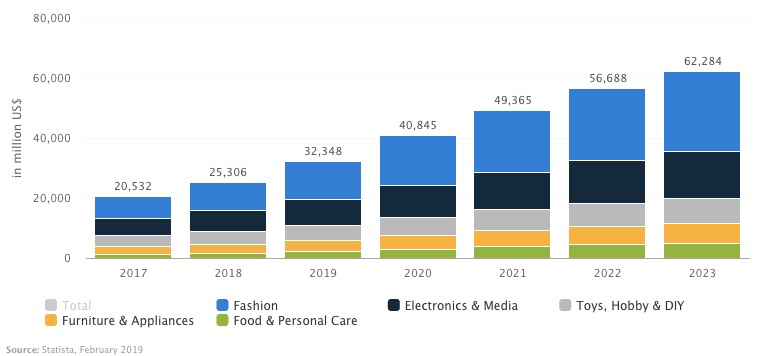
Payment preferences in India
India is primarily a cash economy. A number of Government initiatives such as Digital India, Jan-Dhan Yojana etc were launched to promote cash-less payments however much of India continues to prefer dealing in cash.
Although digital payments have increased in cities like Delhi, Mumbai, Bangalore, Hyderabad and Kolkata but lower tier cities still prefer cash. It is estimated that 60 percent of the total e-commerce payments in India are still made using the cash-on-delivery (COD) option.
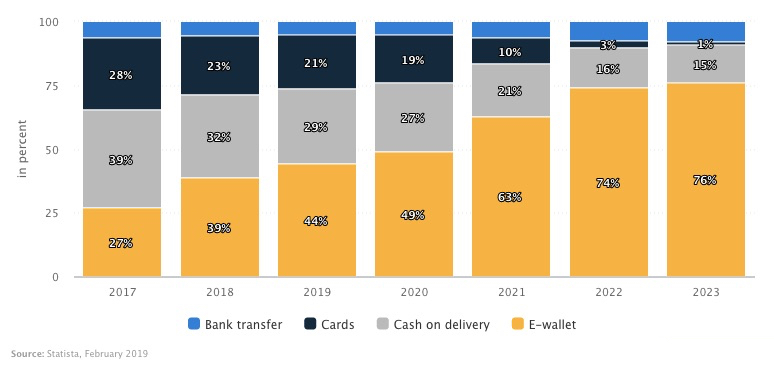
Challenges for the e-Commerce sector in India
The phenomenal growth of the e-Commerce sector is accompanied by certain challenges:
- Absence of e-Commerce laws
- Low entry barriers leading to reduced competitive advantages
- Rapidly changing business models
- Shortage of skilled manpower
- Customer loyalty
- Absence of advanced and faster delivery options
- Logistics
Ecommerce performance across India’s regional markets
The tier-I cities Delhi, Mumbai, Bangalore and Kolkata are the leading markets in terms of total sales and revenue for inline sellers. It is estimated that out of 10, 8 orders come from these cities. Amongst these, Delhi NCR is the largest online purchasing city that makes for one-third of the country’s total online purchases.
75 percent of India resides in non-metropolitan cities. Fuelled by rising disposable incomes, access to the internet, increased smart phone usage these markets cannot be ignored.
Aware of these market trends, online retailers are trying to diversify their consumer base reaching out to customers in their native languages, cash back offers, attractive discounts, etc.
It is estimated that by 2020 there would be about 1.3 million online sellers and nearly 70 percent of these will be based out of tier 2 and tier 3 cities.
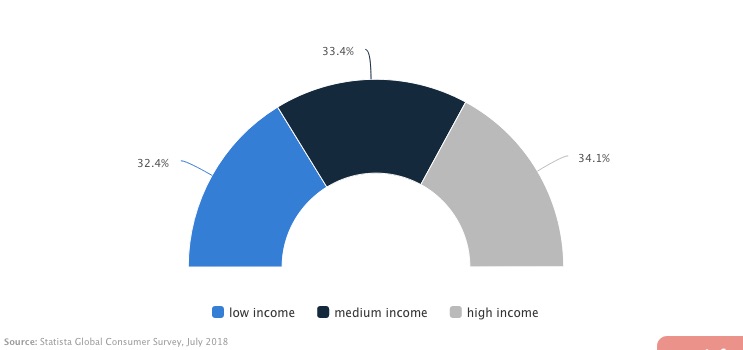
Ecommerce: India’s performance in Asia Pacific Region
The Asia Pacific region is soon going to witness boom in the ecommerce sector in the upcoming years. The number of digital buyers in the region will touch the one billion mark in 2018 which will amount to 60 percent of all internet users in the region. At present the ecommerce penetration rests at only 28 percent but India shows optimistic projections for the ecommerce industry
As per the report from eMarketer, a market research firm, the retail ecommerce sales in India will hop to 31% attaining $32.7 billion, trailing behind only China and Indonesia in the Asia Pacific.
Future of ecommerce in India
Let us look at findings of a research report from NASSCOM and PwC India. (Period of study-2017 to 2022)
With rising incomes and increased smart phone penetration, India’s ecommerce market can potentially grow more than four times to $150 billion by the year 2022.
- During this period India’s middle-class is expected to grow from 380 million in 2017 to 540 million.
- The netizens too are expected to nearly double to 850 million in five years.
- Of the total, 150 million users will emerge mainly from tier-2 and 3 cities and are expected to transact digitally and with diverse language choices, payment modes and products.
- The e-tail market expected to grow at compounded rate of 30% each year to exceed 60 billion by 2022.
- Ecommerce in India is expected to create 1 million jobs by the year 2022.
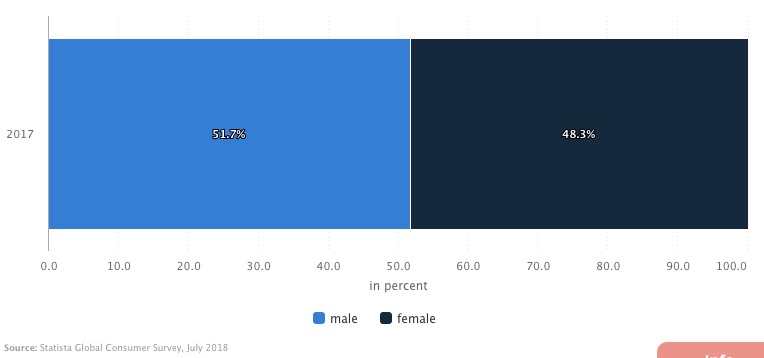
The report mentions a couple of factors contributing to this growth, with one of them being the expansion of e-commerce market leaders such as Flipkart, Amazon and Paytm Mall into several new sectors including grocery. Coupled with this, increasing user base of smartphone and internet in India, as well as the country’s growing young population is adding to the number of digital buyers.
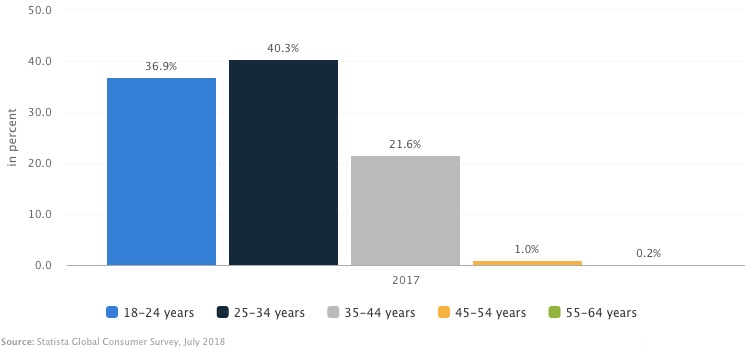
The Indian ecommerce industry has been on an upward growth trajectory and is expected to surpass the US to become the second largest ecommerce market in the world by 2034. Technology enabled innovations like digital payments, hyper-local logistics, analytics driven customer engagement and digital advertisements will further push the growth in the sector.
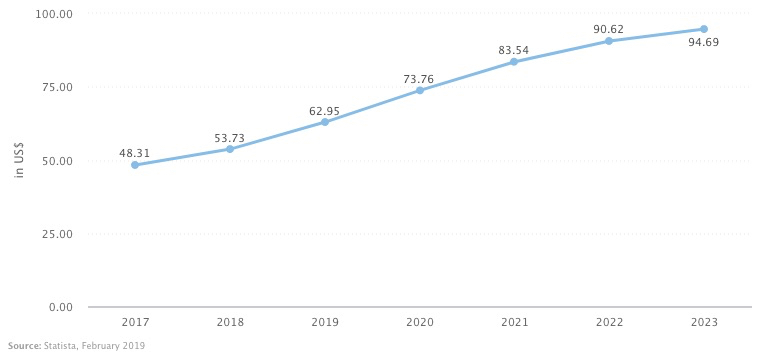
The ecommerce industry is in nascent stage, more niche ecommerce companies are joining the competition. Those who are not operating online will be forced to come online. The customer is winning and there is pressure to deliver the best to the customer.
Old Article: eCommerce in India in 2015
eCommerce in India is passing through an interesting phase. Consumers are evolving and increasingly getting used to the idea of shopping online and certainly looking for info on anything and everything. It is expected that sooner or later marketplace players will start to go slow on discounts and consumer will demand delightful experience.
In the world of deep discounts; customer care, exhaustive range, product information will emerge as some of the most important requisite to become successful in India. At BrandLoom Consulting we believe that the above will be the biggest opportunity for brands.
We call it “Digital Brand Commerce” and it will be driven by AnyWhere Brands across the categories and industries. This article focuses on this particular aspect on eCommerce in India.
Current status of eCommerce in India
Indian eCommerce market is one of the fastest growing online retail market in the world. Current (in 2015) market size of eCommerce in India is estimated to be around US$ 19-20 billion with eCommerce Retail market pegged at around US$5 – 6 Billion in 2015.
eCommerce in India: Market Scenario
Indian eCommerce market is still maturing and currently caters to young consumers (75% of online shoppers in India are under the age of 35) with a keen eye for fashion and technology.
It is estimated that the eCommerce market will account for 2.5 per cent of the India’s GDP by 2030, growing 15 times and reaching USD 300 billion.
The report by Goldman Sachs also said that the “hyper growth in affordable smartphones, improving infrastructure, and a propensity to transact online,” as key growth factors.
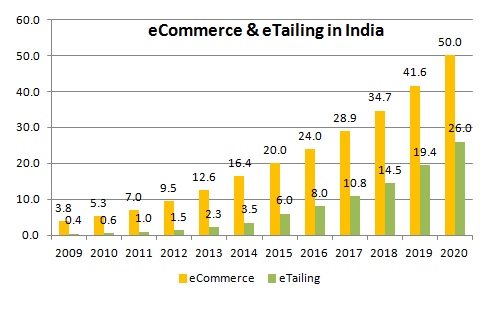
The key drivers for eCommerce in India will be its massive young population (below 35 years of age) with keen interest in technology; growing middle class, tremendous increase in internet penetration driven by cheap feature phone and Smartphone mobile (3G and 4G) and availability of capital to fund the initial growth phase.
As per Internet & Mobile Association of India (IAMAI) the Indian eCommerce market in 2014 was US$16 bn. eTailing is the most recent segment but with highest growth rates and potential. Out of the total market size of US$16 billion, contribution of travel booking is highest at US$9 Billion.
Airlines account for 56%, Railway (IRCTC) 34% and hotel and others 10%. The best example of successful Indian e-commerce is a government venture. The Indian Railways booking site IRCTC had $ 3 billion GMV in 2014 with online bookings now accounting for 43% of all bookings. Its success indicates that the Indian consumer is willing to accept technology if it is a compelling value proposition.
eCommerce in India: Shopper / Consumer Scenario
India has emerged as a key global opportunity due to its economic growth since liberalization in 1991. With a growing population (CURRENT 1.4%) of over 1.2 billion it is largely a Young Country with average age still at 25 years. Almost 2/3rd of the population is in working age group with increasing number of women seeking employment as a result of continuing globalisation of the economy.
| 2005 | 2010 | 2015 | 2025 | |
| Population | 1107 | 1190 | 1278 | 1429 |
| Dependency Ratio | 60% | 56% | 52% | 48% |
| Working age Population | 692 | 764 | 841 | 966 |
| Non working age Population | 415 | 426 | 437 | 463 |
It is expected that India’s demographic dividend would lead to over 300 million new online shoppers in the next 15 years, making e-tailing the largest online segment. India will have the second-largest digital population in the world with 1 billion users by 2030, powered by online mobile penetration.
The most important socio-economic and socio-cultural trend is the emergence of the middle class (200 Million people in 2013), who will be 35% of the population (500 million) by 2023.
| Population Division of India | 2013 | 2017 | 2020 | 2023 |
| Population (Million people) | 1209 | 1286 | 1319 | 1384 |
| Lower Class* | 1007 | 968 | 920 | 875 |
| Middle & Upper Class* | 201 | 318 | 399 | 509 |
Middle class (in combination with upper class) of India will have substantial purchasing power (Current 50% of country disposable income US$400 billion to 75% of total disposable income US$1 trillion by 2023).
| Disposable Income in US$ Billion | 2013 | 2017 | 2020 | 2023 |
| Total Disposable Income | 745 | 963 | 1144 | 1403 |
| Lower Class | 359 | 359 | 346 | 334 |
| Middle & Upper Class | 385 | 605 | 798 | 1069 |
This Young Population has no baggage of the past. They are born in an era of open consumerism
- Are confident and Optimistic about their Future
- Looking for opportunity to improve themselves
- Admires & Appreciates “Youth” and “Modernity” primarily inspired by west.
- New Generation icons are modern achievers like Bill Gates
This is resulting in Lifestyle change with emergence of new value propositions like fashion and convenience rather than merely price. India’s retail market will be undergoing complete transformation over the next decade with the emergence of eTailing and organised retail, which will be adding fuel to the apparel growth.
| Retail Market status in India | 2013 | 2015 | 2017 | 2020 |
| Retail Market size (US$ Billion) | 535 | 614 | 705 | 867 |
| Organised Retail | 73 | 102 | 144 | 229 |
| Unorganised Retail | 462 | 512 | 561 | 638 |
| Organised Retail as a % of total Retail | 14% | 17% | 20% | 26% |
| eRetail Market in India (US$ Billion) | 2.3 | 6 | 11 | 26 |
| eRetail as a % of Total retail Market | 0.4% | 1% | 1.5% | 3% |
| eRetail as a % of Total retail Market | 3% | 6% | 7.5% | 11.4% |
eCommerce in India: Competitive scenario
Many international (such as Amazon, Alibaba, ebay etc.) and homegrown (Flipkart, Snapdeal) players are fighting battle to win consumer and garner as much market space as possible. The eCommerce players are not trying to turn profitable anytime soon but to ensure that more and more people come online and buy on their portal. It is estimated that they will start to turn profitable by 2020 with reduced discounting.
At BrandLoom Consulting we believe that deep discounts, free shipping, intense competition and higher rejection rates due to cash on delivery (CoD) have impacted eTailing adversely. It will be very difficult for eCommerce players to overcome such issues.
Marketplace model, which has drawn interest of VC’s from all over the world is being adopted by several players both mass (flipkart, amazon etc) and niche (Pepperfry etc.), however they all depend on thousands of small sellers.
Our experience shows that these sellers like trading fast moving products and if you want to buy that Park Avenue suit for your dinner party with friends, you will not get it.
This is contrary to the biggest benefit of Long Tail offered by online retailing. Over emphasis by several sellers for branded goods increases competition and erodes their margins and reduces their online business volume. This is something which is leading to disenchantment among sellers.
eCommerce in India: Future of Brands
Till now most of the retail brands have been watching the entire game from the sidelines. Most of the brands were worried about potential channel conflict and did not want to offend their offline distributor and retailer.
Traders have taken advantage of this situation and have started selling brands on the mushrooming marketplaces.
These traders are completely ill-equipped to manage the complexity of the web and have been surviving by offering lower prices than the other one.
The concept of customer service, customer intimacy and grievance handling has been on backburner.
Leading marketplaces have evolved the situation and have started offering services like PaisaPay (ebay), A-to-Z Guarantee (Amazon) to protect consumers from mischievous sellers.
With consumers already getting used to the idea of shopping online sooner or later marketplace players will start to go slow on discounts (something which we have seen with organized retailers and travel-commerce companies in India and world over), customer care, range, product information will emerge as some of the most important requisite to become successful in India.
At BrandLoom Consulting we believe that the above will be the biggest opportunity in India. We call it “Digital Brand Commerce” and it will be driven by Brands across the categories and industries.
However we believe that brands are still oblivious to the fact and continuing to enter in the eCommerce arena themselves allowing undisciplined sellers to make merry (till party lasts).
What brands are not realizing is that unknown players are emerging out of nowhere and have already started to connect with consumers. Apparel industry has several example with the most notable being YepMe.
Strong brands with distinct value preposition needs to adopt online retailing not only to sell their products but also to share their Brand Story. Consumers love to connect with brands with a soul and online consumers do that much more. By reaching out to consumers directly:
- Brands will be able to communicate (in the best possible manner) who they are, what they do and why should a consumer care about them & buy from them.
- Brands will be able to command higher margin and reduce cost as they will be able to save channel margin which at times is as high as 50% to 60% of the maximum retail price of a product.
- Brands will be able to increase their Speed to market as they do not have to depend on pushing through their new products through inefficient distribution networks.
We call such brands AnyWhere Brands at BrandLoom Consulting.

